There’s something so perfectly human about a train at the end of the world.
A beating, stubborn mechanism, surging inexorably to the end of the line – a landscape tamed, stitched through with iron tracks and sleepers that now carry us into oblivion. The Last of Us, with its apocalyptically ironic re-tread of the American pioneers’ journey west, grasped at the desperate freedom and futility of movement at the end of days. The Final Station binds this freedom to the track.
As a train conductor, it falls to you to carry a jumble of people from one place to the next, moving cargo, working for the government, and exploring a sequence of stations. At these, you’ll poke around for supplies, rescue stranded civilians, and fend off a dark presence.
106 years prior to the game’s events, there was a cataclysm called ‘The First Visitation’ which left humanity, as it was, devastated. In this spent shell-casing of a future, the semi-civilised remnants of humanity live in fear of the whispered ‘Second Visitation’. What follows is a one-way journey under the impending murk of destruction.
A 16-bit side-scroller, The Final Station is split into moving train sections and on-foot sections. Each has a charm all its own; each is repeated so many times it becomes mantra. There are thirty stations in the game; alighting gun in hand, you’ll rummage and ransack with an eye for finding the code you need – your train is clamped by a blocker at each station which you need to release. Finding the code is rarely straightforward and will lead into claustrophobic caverns, into the decaying arteries of buildings, and occasionally through safe zones wherein you can talk to people and buy supplies.
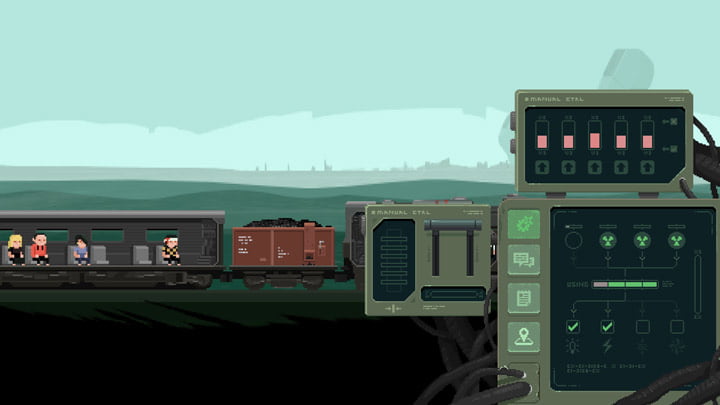
Enemies come in a variety of forms, each with their own traits and weaknesses. Without going into too much detail, encounters are puzzles; they’re never white-knuckle. Some require you loose your bullets with precision; others allow for an ammo-conserving melee clobbering; still others require manipulation of the environment. Like the best post-apocalyptic fiction, one or two enemies never pose too much of a threat – but a horde does.
Tension is eked out of exploration in that rooms you haven’t entered are blacked out. This gives you fleeting moments of pause before each door, reloading your weapon, perhaps picking up a nearby chair ready to lob at whatever lurks on the other side. Once you’ve got the code, you’re off back to your train.
2D animation has the power to conjure a sweeping sense of motion. There’s nothing quite like the layered, whirling parallax as you tear across landscapes that run the gamut from scorched earth, through forlorn towns and clapped-out cities, to snowy wastes and barren industrial zones. Birds and cliffs hurtle past in the foreground as the pistons of your train hammer the rails. In the background, lakes loom large; lonely oil platforms crawl past; and the thrum of chatter from your passengers is pierced now and then by a terrifying boom or a flash of brilliant white light. All this is punctuated with ephemeral music, driving piano giving way to eerie synth for a mood of sedate sadness.
The Finals Station’s core gameplay loop makes no attempt to deviate from the track. You explore, shoot, rescue, find the code, and leave many times over. While it is repetitive, each of the game’s sections is filled with pleasing touches. Guns feel empowering – they are very loud and they sound right, with a nice rumble in the hand (assuming you’re playing with a game pad, which I would recommend). Punching in the code at each beige key pad feels satisfying, the buttons depressing pleasingly with the clacking of a late ’90s keyboard.
The trouble here is that the game would be lent a clump of much-needed heft were the difficulty ramped up – by a generous measure. It punctures the sense of urgency in an end-world scenario when you have ammo, med-kits, and food in abundance. You must tend to the gaggle of passengers in your charge during the train sections, feeding them and using med-kits to patch them up; if you get them to a safe zone, you’re rewarded with money, supplies, and upgrades. I never lost a single one.
The two halves of the gameplay have a nice ebb-and-flow: it’s always a release, having scavenged and killed, to get out of dodge and hit the track, to feel the world rushing by. On the other hand, after dashing down carriages, patching up your train, tending to your passengers needs, and keeping up with their chatter to catch snippets of story, it’s nice to feel the stillness of the on-foot sections.
Though it might seem a contrived mechanism, fetching the blocker code over and over, there’s a lovely idea underlying the mechanic: bureaucracy lives on. It’s always odd to see our need for petty order prevail, to see the memos, E-mails, and number clearances live on through the chaos.
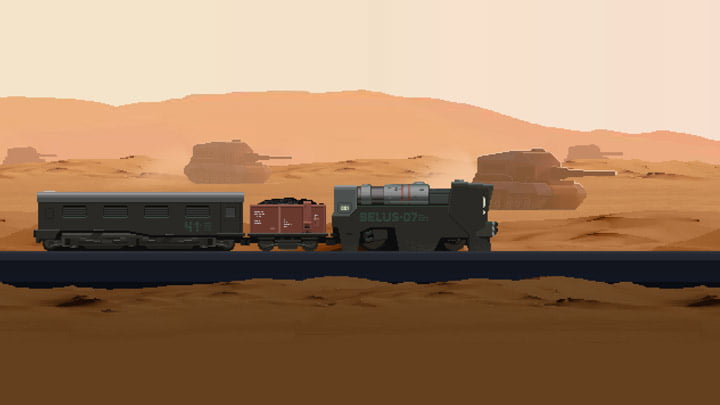
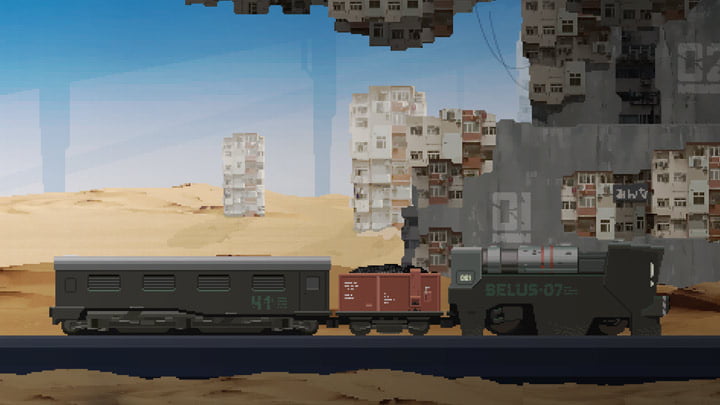
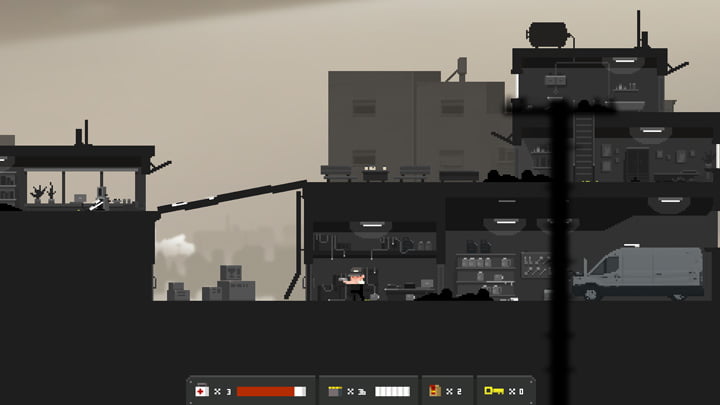
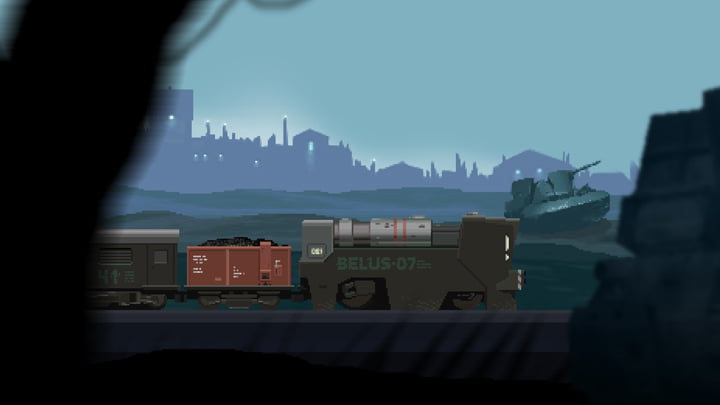
The Final Station wears the utilitarian charm of pixel art and garnishes its environments with sparse detail that speaks to its world and its history. Quentin Tarantino famously writes entire character histories for his scripts that don’t make it into the film – when asked why he does this he simply responded, “It’s writing. That’s what writers do.” There is an almost imperceptible current running through some games where you know there is a document lurking in a desk drawer somewhere with far more than you’ll ever see playing. The Final Station feels like one of those games.
More than this, there are appreciative homages to writers and writing littered throughout like scrunched-up pieces of paper. At one point, you come across a man holed up in a bunker, surrounded by discarded papers piled high in frustration; he is trying to nail the beginning of a story, falling short of the mark. At another, you come across a shady underground night club; its patrons take a drug doled out by the staff before picking books off the shelves and falling into their own oblivion, high on escape.
At the game’s denouement, you find yourself before a gargantuan statue in honour of two brothers. They are behind several scientific advancements in the effort to prepare for the ‘Second Visitation’, but they started their careers as science fiction writers. Elsewhere there are nods to seminal sci-fi all over, from the puppet masters of Heinlein to the black goo of The X-files.
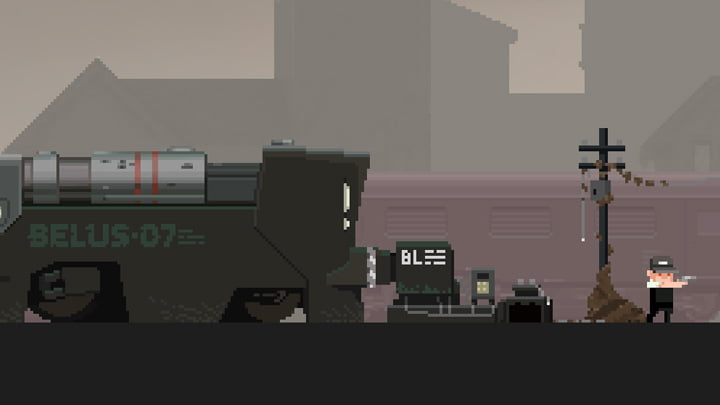






Excellent review, makes me want to play the game and be immersed in it.